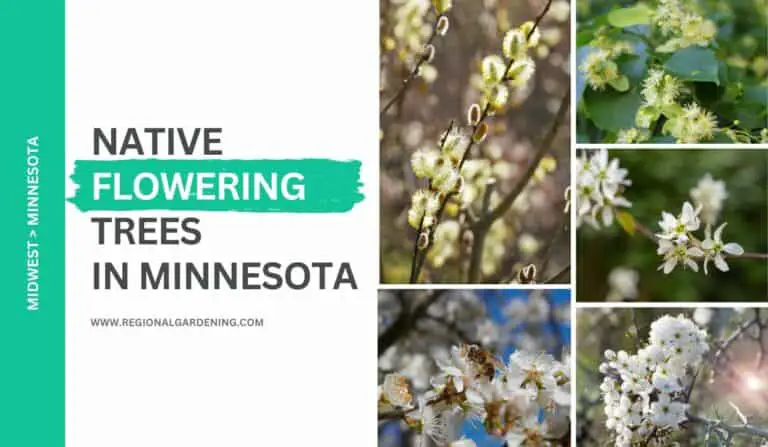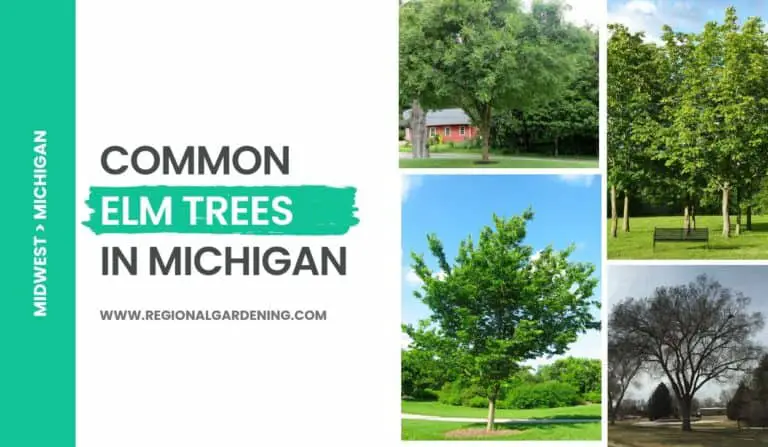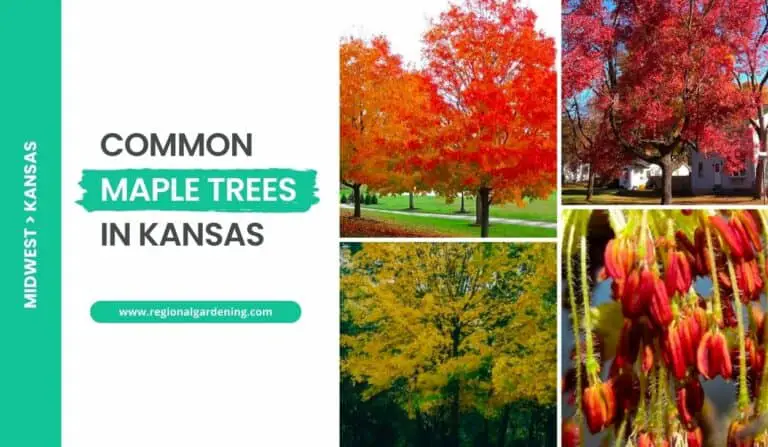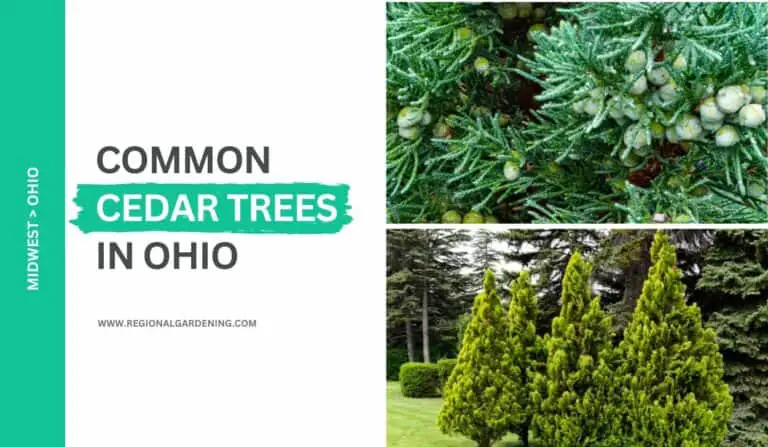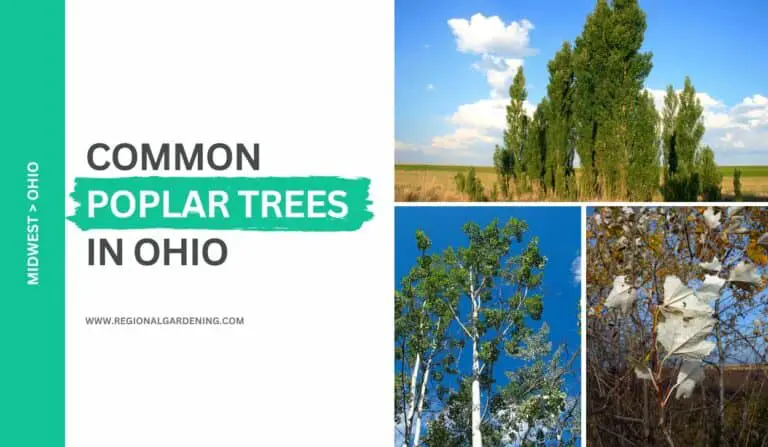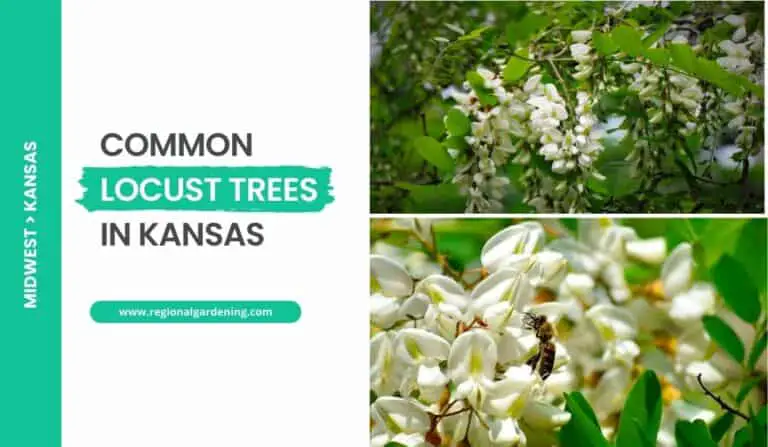7 Common Oak Trees In Michigan (Photos & ID Guide)
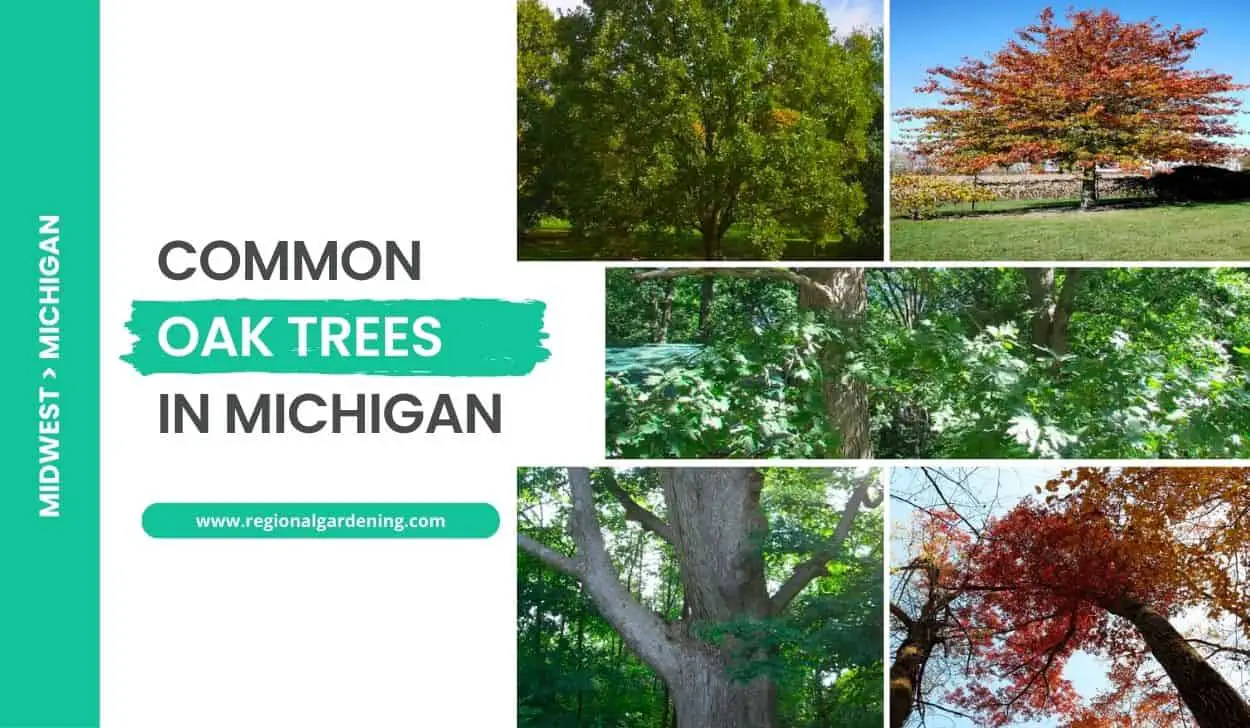
Oak trees are a staple of the Michigan landscape, and for good reason.
These majestic trees provide beauty, shade, and a home to a variety of wildlife. In this article, we will take a look at seven of Michigan’s most magnificent oak trees. We will provide photos and information on each tree, so you can learn more about these amazing creatures.
So, let us go through the seven most magnificent oak trees in Michigan one by one.
1. Black Oak
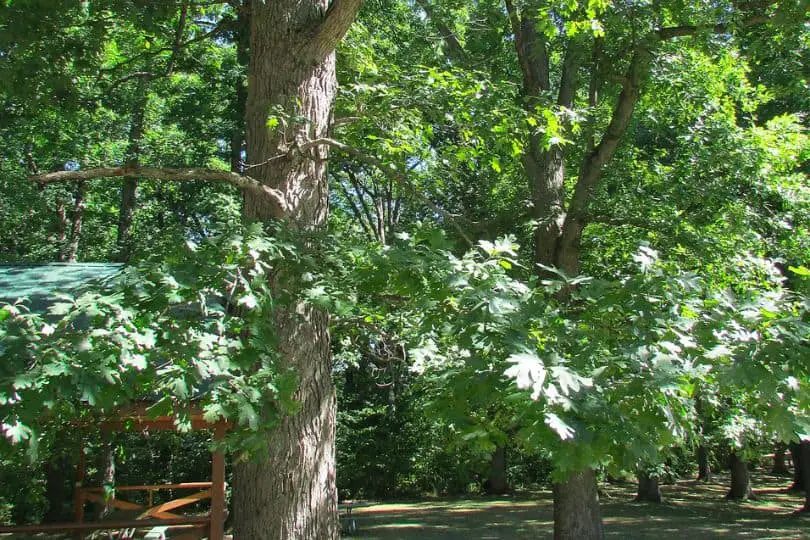
- Scientific Name: Quercus velutina
- Common Name(s): Black oak
- Mature Height: 50-80 feet (15-24 meters)
- Native Region: North America
- Flowers: No Flowers
- Fruit: Acorns
- Uses: Shade tree, wildlife habitat, lumber production
The Black Oak, scientifically known as Quercus velutina, is a prominent deciduous tree commonly encountered in Michigan gardens. With a mature height ranging from 50 to 80 feet (15 to 24 meters), it presents a commanding presence in the landscape. Originating from North America, particularly in the eastern regions, the Black Oak is valued for its versatility and ecological significance.
Physically, the Black Oak is characterized by its deeply furrowed black bark, which lends it a rugged and textured appearance. Its foliage consists of glossy, dark green leaves, which turn a brilliant red-orange in autumn, creating a stunning visual display. While it does not produce showy flowers, it compensates with an abundant yield of acorns, which serve as a vital food source for various wildlife species.
In its native range, the Black Oak thrives in a variety of habitats, including upland forests, woodland edges, and dry slopes. It exhibits a preference for well-drained, acidic soils but can tolerate a range of soil conditions. When cultivated in Michigan gardens, it is essential to provide adequate spacing to accommodate its expansive canopy and to ensure optimal growth.
Caring for Black Oak trees in Michigan gardens involves regular watering, particularly during dry spells, to maintain soil moisture levels. Mulching around the base helps retain moisture and suppress weed growth. Pruning should be conducted during the dormant season to shape the tree and remove dead or diseased branches, promoting overall health and vigor.
2. Northern Pin Oak
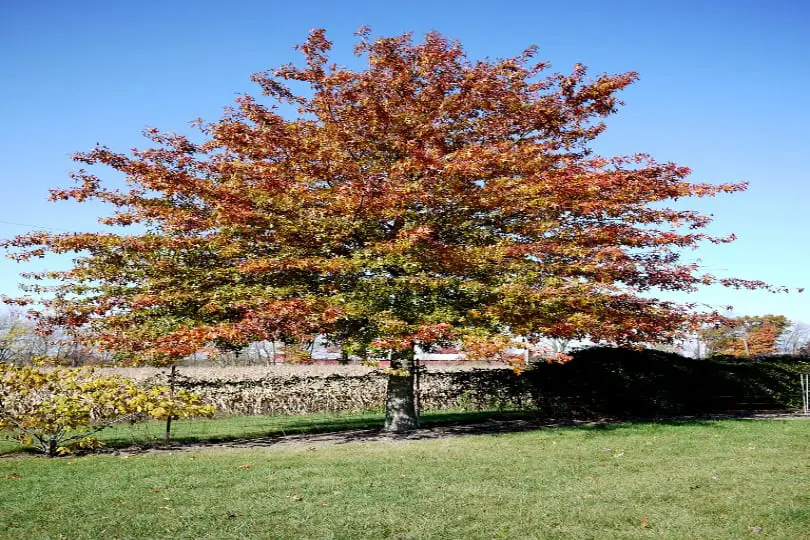
- Scientific Name: Quercus ellipsoidalis
- Common Name(s): Northern pin oak
- Mature Height: 50-75 feet (15-23 meters)
- Native Region: North America
- Flowers: No Flowers
- Fruit: Acorns
- Uses: Ornamental, shade tree, wildlife habitat
Description:
The Northern Pin Oak, known scientifically as Quercus ellipsoidalis, is a distinctive deciduous tree commonly sighted in Michigan gardens. With a height that typically reaches between 50 and 75 feet (15 to 23 meters), it becomes a striking focal point in any landscape. Indigenous to North America, particularly in the northern areas, the Northern Pin Oak is valued for its visual appeal and ecological importance.
In terms of appearance, the Northern Pin Oak features leaves with a unique pin-like shape, which transform into vivid red-orange hues during the autumn season, adding a picturesque touch to the surroundings. Its bark is dark grey and deeply grooved, contributing to its rugged aesthetic. Although it does not produce showy flowers, it does bear small acorns that serve as a vital food source for various wildlife species.
Thriving in a variety of soil types, including well-drained sandy or loamy soils, the Northern Pin Oak prefers exposure to full sunlight but can tolerate partial shade. When cultivated in Michigan gardens, it’s crucial to allow sufficient space for its expansive canopy and to ensure proper air circulation.
Caring for Northern Pin Oak trees in Michigan gardens entails regular watering, especially during dry spells, to maintain optimal soil moisture levels. Applying mulch around the base aids in moisture retention and weed suppression. Pruning should be performed during the dormant season to shape the tree and remove dead or damaged branches, fostering overall health and vitality.
3. Swamp White Oak
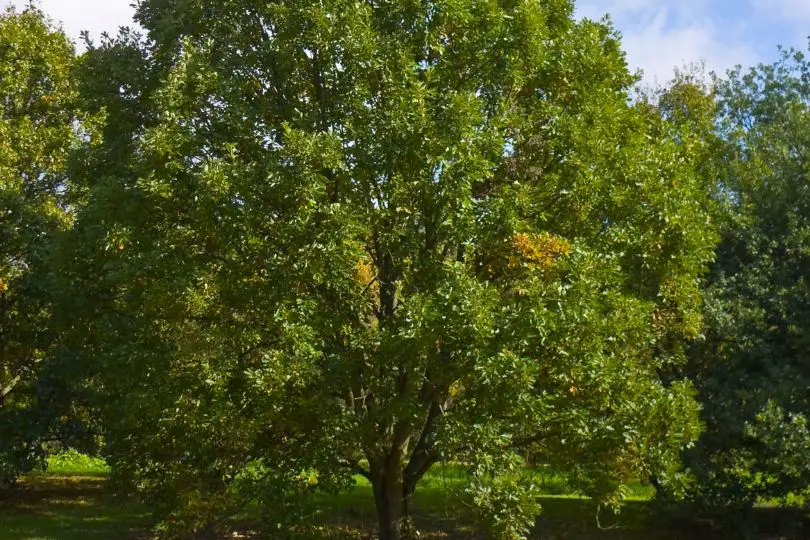
- Scientific Name: Quercus bicolor
- Common Name(s): Swamp White Oak
- Mature Height: 50-60 feet [15-18 meters]
- Native Region: North America
- Flowers: Yellow-green catkins
- Fruit: Acorns with a shallow, saucer-shaped cap
- Uses: Timber for furniture, flooring, and cabinets; erosion control; wildlife habitat; ornamental landscaping
The Swamp White Oak, scientifically known as Quercus bicolor, is a majestic deciduous tree native to Michigan, gracing its wetland areas with its striking presence. Found abundantly throughout the state, particularly in swampy regions, this oak species is renowned for its adaptability to a variety of soil conditions, thriving in both wet and well-drained soils.
In Michigan, the Swamp White Oak typically grows to heights ranging from 50 to 80 feet, with a spread of 40 to 60 feet, forming a broad, rounded crown that provides ample shade and habitat for various wildlife species. Its bark is dark gray and deeply furrowed, adding texture to its aesthetic appeal.
During spring, the Swamp White Oak unfurls delicate, lobed leaves with a glossy green hue, turning to shades of yellow and brown in autumn, creating a stunning display of fall foliage across Michigan’s landscapes. Its acorns produced abundantly, serve as a vital food source for local wildlife, including squirrels, deer, and birds.
Beyond its ecological significance, the Swamp White Oak holds cultural and historical importance in Michigan, often cherished for its lumber, which is used in construction and furniture-making due to its durability and attractive grain patterns. Additionally, Indigenous peoples historically utilized various parts of the tree for medicinal and ceremonial purposes, further deepening its cultural significance.
Conservation efforts in Michigan aim to protect and preserve the Swamp White Oak and its surrounding wetland ecosystems, recognizing its role in maintaining biodiversity and ecological balance. Through initiatives such as wetland restoration and habitat conservation, stakeholders strive to ensure the continued vitality of this iconic species and its associated ecosystems.
4. Chinquapin Oak
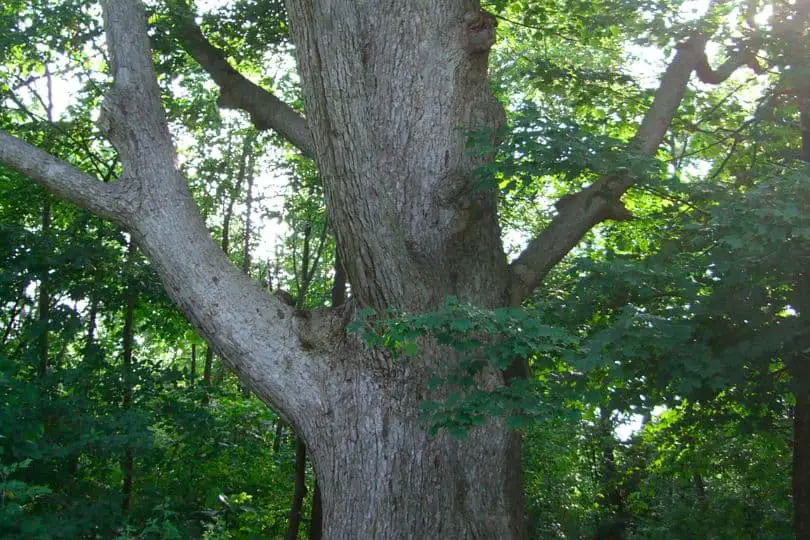
- Scientific Name: Quercus muehlenbergii
- Common Name(s): Chinquapin Oak
- Mature Height: 50-70 feet [15-21 meters]
- Native Region: North America
- Flowers: Yellow-green catkins
- Fruit: Small acorns with a hairy cup
- Uses: Timber for furniture and flooring, wildlife habitat, erosion control, and ornamental landscaping.
The Chinquapin Oak, scientifically known as Quercus muehlenbergii, is a splendid deciduous tree native to Michigan, enhancing its landscapes with its majesty and ecological significance. Although not as widespread as some other oak species in the state, the Chinquapin Oak can still be found in various regions, particularly in upland areas with well-drained soils.
In Michigan, the Chinquapin Oak typically reaches heights of 50 to 70 feet, with a spread of 40 to 50 feet, forming a broad, rounded crown that provides shade and habitat for numerous wildlife species. Its bark is dark brown and deeply furrowed, adding texture to its visual appeal.
During spring, the Chinquapin Oak produces glossy green, toothed leaves that turn to shades of yellow and bronze in autumn, contributing to the vibrant tapestry of fall foliage across Michigan’s landscapes. Although its acorns are not as abundant as those of some other oak species, they serve as an important food source for various wildlife, including squirrels, deer, and birds.
Beyond its ecological significance, the Chinquapin Oak holds cultural and historical importance in Michigan, valued for its timber, which is used in woodworking and furniture-making due to its strength and attractive grain patterns. Additionally, Indigenous communities historically utilized various parts of the tree for medicinal and ceremonial purposes, further adding to its cultural significance.
Conservation efforts in Michigan aim to protect and preserve the Chinquapin Oak and its associated upland ecosystems, recognizing its role in supporting biodiversity and maintaining ecological balance. Through initiatives such as habitat conservation and sustainable forestry practices, stakeholders strive to ensure the continued health and vitality of this iconic species.
5. Northern Red Oak
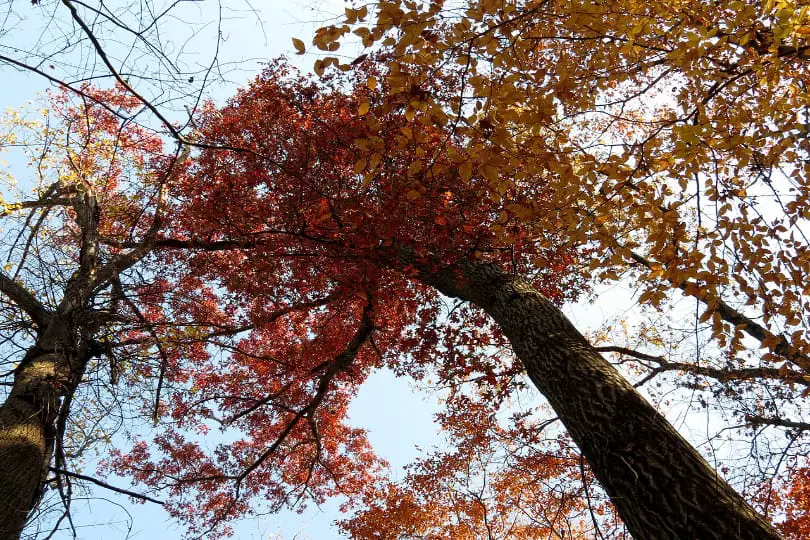
- Scientific Name: Quercus rubra
- Common Name(s): Northern Red Oak
- Mature Height: 60-75 feet [18-23 meters]
- Native Region: North America
- Flowers: Inconspicuous yellow-green catkins
- Fruit: Small acorns with a shallow, saucer-shaped cap
- Uses: Timber for furniture, flooring, and cabinets; wildlife habitat; ornamental landscaping.
The Northern Red Oak, scientifically known as Quercus rubra, is a majestic deciduous tree native to North America, particularly prominent in the eastern regions of the United Kingdom. Renowned for its striking appearance and valuable timber, it typically grows to heights ranging from 20 to 30 meters, with a broad, rounded crown and a sturdy, straight trunk.
The leaves of the Northern Red Oak are a defining feature, showcasing a vibrant reddish-brown hue in autumn, hence its name. These leaves are lobed with pointed tips and serrated edges, adding to the tree’s visual allure throughout the seasons.
During spring, inconspicuous flowers bloom, giving way to the tree’s distinct acorns, which serve as a vital food source for various wildlife species. The bark of the Northern Red Oak is characterized by its dark grey, deeply furrowed texture, providing both visual interest and protection against external elements.
This species thrives in well-drained soils and full sunlight, making it a common sight in parks, woodlands, and urban landscapes. Beyond its aesthetic appeal, the Northern Red Oak holds ecological significance, supporting diverse ecosystems and contributing to the overall biodiversity of its habitat.
In Michigan, the Northern Red Oak flourishes across various habitats, from forests to urban parks. Its vibrant foliage paints the landscape with hues of red and brown in autumn, enhancing the state’s natural beauty. Serving as a staple component of Michigan’s rich biodiversity, these trees provide habitat and sustenance for numerous wildlife species. Additionally, their sturdy wood is valued for construction and furniture-making industries, contributing to the state’s economy. In Michigan’s forests, the Northern Red Oak stands tall as a symbol of resilience and vitality, enriching the environment and captivating onlookers with its majestic presence.
6. White Oak
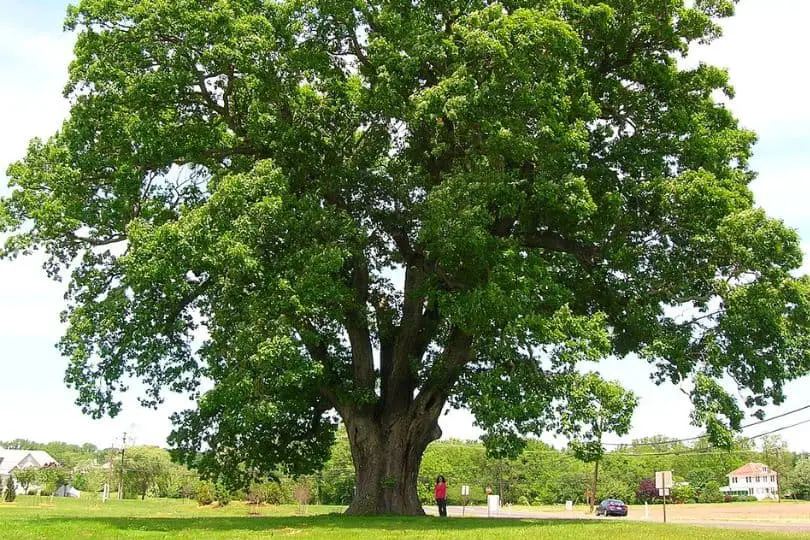
- Scientific Name: Quercus alba
- Common Name(s): White Oak
- Mature Height: 50-80 feet [15-24 meters]
- Native Region: North America
- Flowers: No Flowers
- Fruit: Acorns with a shallow, saucer-shaped cap
- Uses: Timber for furniture, flooring, and barrels; wildlife habitat; ornamental landscaping.
White Oak (Quercus alba) is a quintessential native tree species found abundantly throughout Michigan’s diverse landscape. Recognized by its broad, lobed leaves with rounded tips, the White Oak is a symbol of strength and longevity in the region. Its bark, a smooth light grey when young, becomes deeply furrowed with age, adding to its distinctive appearance.
In Michigan, White Oaks typically thrive in various habitats, from moist lowlands to dry upland forests. They are often found mingling with other hardwoods like maples, hickories, and beeches. These majestic trees can reach towering heights of up to 100 feet, providing essential habitat and food for numerous wildlife species.
Come autumn, the foliage of the White Oak transforms into a stunning array of red, brown, and copper hues, painting the landscape with warmth and vibrancy. Its acorns, a vital food source for many animals, ripen in the fall, contributing to the rich biodiversity of Michigan’s forests.
Due to its strength and durability, White Oak timber has been highly valued for centuries, commonly used in construction, furniture-making, and barrel production for aging fine wines and spirits. Beyond its economic importance, the White Oak holds a special place in the hearts of Michiganders, embodying the resilience and beauty of their natural environment.
7. Bur Oak
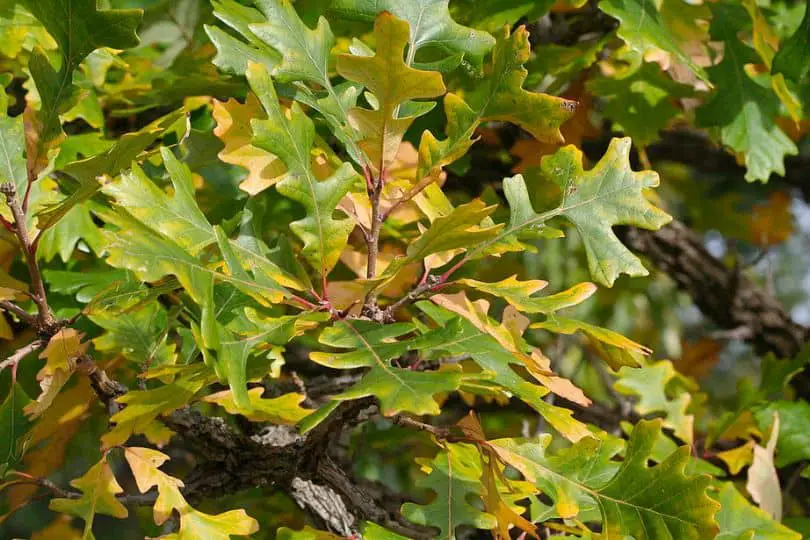
- Scientific Name: Quercus macrocarpa
- Common Name(s): Bur Oak
- Mature Height: 60-80 feet [18-24 meters]
- Native Region: North America
- Flowers: Yellow-green catkins
- Fruit: Large acorns with fringed cups
- Uses: Provides shade, and timber for construction, wildlife habitat, and ornamental purposes.
Bur Oak (Quercus macrocarpa) is another prevalent tree species in Michigan, known for its robust nature and distinctive appearance. Easily identifiable by its large, deeply lobed leaves and rough, corky bark, the Bur Oak is a common sight across the state.
These trees are adaptable to various soil types and can be found in a range of habitats, from floodplains to dry upland areas. Standing tall at heights of up to 100 feet, Bur Oaks provides essential habitat and food for local wildlife.
In the autumn months, the leaves of the Bur Oak turn shades of yellow and brown, adding to the seasonal splendor of Michigan’s forests. Its acorns, which are significantly larger than those of other oak species, serve as a valuable food source for many animals.
The sturdy wood of the Bur Oak has been historically prized for its durability and strength, used in a variety of applications such as furniture-making and construction. Additionally, its acorns were a traditional food source for Indigenous peoples in the region.
Similar Articles
- Native Birch Trees In Michigan
- Native Elm Trees In Michigan
- Common Nut Trees In Michigan
- Common White Bark Trees In Michigan
- Common Ash Trees In Michigan
- Common Willow Trees In Michigan
- Common Spruce Trees In Michigan
- Red Flowering Trees In Michigan
- Common Maple Trees In Michigan
- Purple Trees In Michigan
- Common Yellow Trees In Michigan
- Common White Flowering Trees In Michigan
- Common Hickory Trees In Michigan
Common Oak Trees In Michigan – Sources
The Regional Gardening team makes sure that the information in our articles is accurate by only using sources that are known to be trustworthy. Some of these sources are peer-reviewed journals from government agencies, well-known universities, and scientific research organizations.
- Book – Michigan Trees A Guide to the Trees of the Great Lakes Region
- Book – Field Manual of Michigan Flora
- Book – Trees Of Michigan Field Guide
- Michigan’s Forests, Department of Natural Resources
- Michigan Botanical Society
- LSA Herbarium, University Of Michigan
- Department Of Forestry, Michigan State University
- Michigan Nature Association


